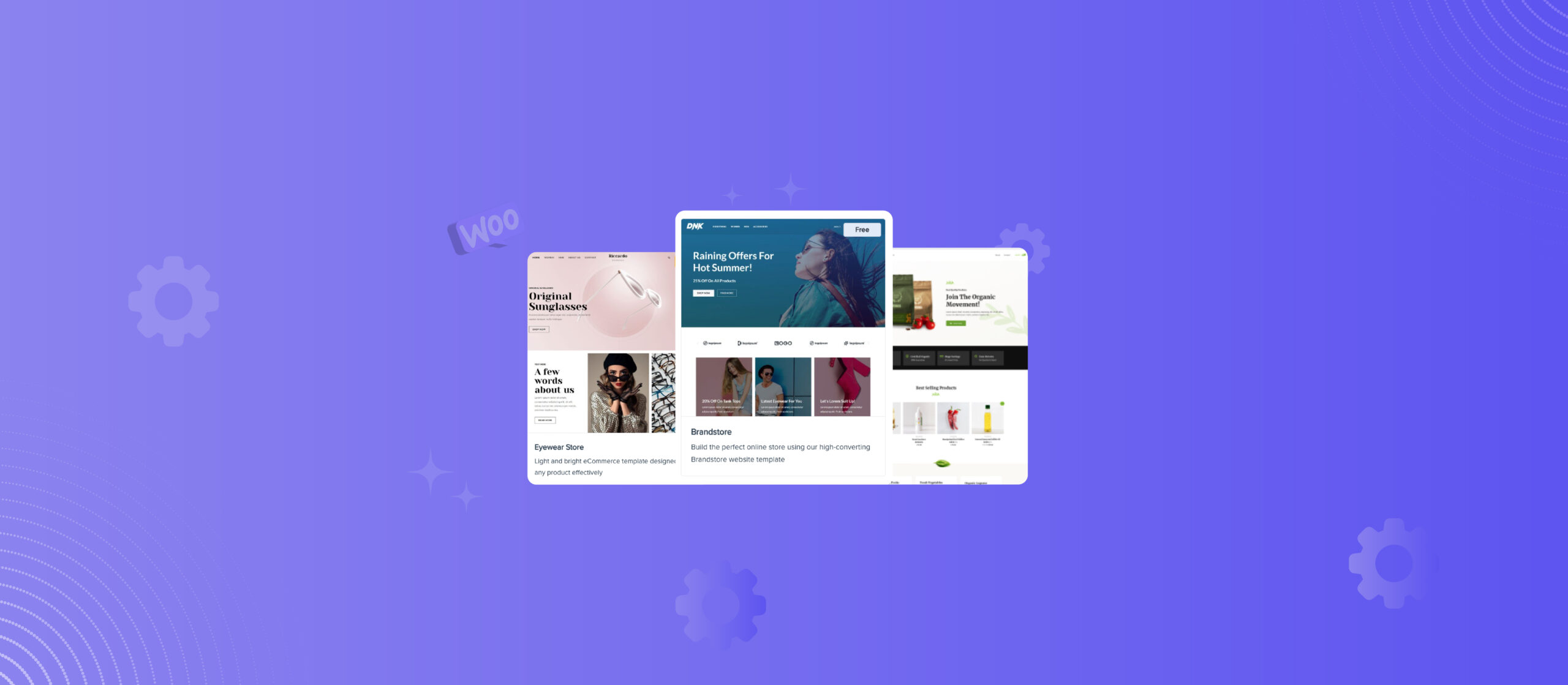To choose a blogging theme, focus on responsiveness, speed, and customization. Prioritize SEO-friendly and mobile-optimized designs.
Choosing the right blogging theme is crucial for your site’s success. A good theme enhances user experience and boosts SEO performance. It should be responsive, ensuring your blog looks great on all devices. Speed is essential; a fast-loading theme keeps visitors engaged.
Customization options allow you to tailor your blog to reflect your brand. An SEO-friendly theme improves search engine rankings. Mobile optimization ensures accessibility for users on smartphones and tablets. Make sure the theme you choose supports plugins and updates regularly. These features collectively contribute to a successful and appealing blog.
Design And Aesthetics
Choosing the right blogging theme is crucial. The design and aesthetics of your blog create the first impression. They play a significant role in user engagement. Here’s a detailed guide on what to look for in terms of design and aesthetics.
Visual Appeal
Your blog’s visual appeal is the first thing visitors notice. It should be clean and attractive. A visually appealing blog keeps visitors engaged. Here are key factors to consider:
- Color Scheme: Choose a color scheme that matches your brand.
- Typography: Ensure fonts are readable and appealing.
- Images: Use high-quality images that complement your content.
Customization Options
Customization options allow you to tweak the theme to fit your needs. A good theme offers flexibility. Here are some essential customization features:
- Layout Options: Choose from various layouts to suit your content.
- Widgets: Add functionality with customizable widgets.
- Custom CSS: Advanced users can use custom CSS for further tweaks.
Here’s a table summarizing the key points:
| Aspect | Description |
|---|---|
| Color Scheme | Matches your brand and is pleasing to the eyes. |
| Typography | Readable and complements the overall design. |
| Images | High-quality and relevant to your content. |
| Layout Options | Flexible layouts to present your content effectively. |
| Widgets | Customizable widgets for added functionality. |
| Custom CSS | Allows for advanced design tweaks. |

Responsiveness
Choosing a blogging theme is crucial for your site’s success. One key factor is responsiveness. A responsive theme ensures your blog looks great on any device. This includes desktops, tablets, and smartphones.
Mobile-friendly
A mobile-friendly theme is essential. Most people browse the web on their phones. Your blog should adapt to different screen sizes. This improves user experience and keeps visitors on your site longer.
Check if the theme supports touch gestures. These are swipes and taps. It should also load quickly on mobile networks. Speed is critical for keeping users engaged.
- Adapts to different screen sizes
- Supports touch gestures
- Loads quickly on mobile networks
Cross-browser Compatibility
Cross-browser compatibility ensures your site works on all web browsers. This includes Chrome, Firefox, Safari, and Edge. Your blog should display correctly no matter the browser.
Test your theme on multiple browsers. This guarantees a consistent experience. Use online tools to check compatibility. This step helps you find and fix issues early.
| Browser | Supported Versions |
|---|---|
| Chrome | Latest 2 versions |
| Firefox | Latest 2 versions |
| Safari | Latest 2 versions |
| Edge | Latest 2 versions |
Ensuring cross-browser compatibility boosts your site’s reach. It also enhances user satisfaction. Your blog should be accessible to everyone.
Loading Speed
Loading speed is crucial for a successful blog. A fast-loading blog keeps readers engaged and improves SEO rankings. Slow-loading blogs can frustrate visitors and increase bounce rates. Choosing a theme with optimal loading speed is essential.
Performance Metrics
Performance metrics help measure your blog’s loading speed.
- Page Load Time: The time it takes for a page to fully load.
- First Contentful Paint (FCP): Time to display the first element.
- Time to Interactive (TTI): Time for the page to become fully interactive.
- Speed Index: How quickly content is visually displayed.
Use tools like Google PageSpeed Insights and GTmetrix to track these metrics.
Optimization Techniques
There are several techniques to optimize your blog theme for speed:
- Minimize HTTP Requests: Reduce the number of elements on your page.
- Enable Compression: Use Gzip to compress files.
- Optimize Images: Use formats like WebP and compress images.
- Leverage Browser Caching: Store static files in the user’s browser.
- Minify CSS, JavaScript, and HTML: Remove unnecessary characters from code.
These techniques help in making your blog load faster.
Seo Friendliness
Choosing the right blogging theme is crucial for your website’s success. One key factor to consider is SEO friendliness. An SEO-friendly theme can significantly boost your search engine rankings, making your content more discoverable. Below, we dive into two critical aspects of SEO-friendly themes: Clean Code and Schema Markup.
Clean Code
Clean code is essential for an SEO-friendly theme. It ensures your site loads quickly and functions smoothly. Search engines prefer websites with clean code, as they are easier to crawl and index.
- Minified CSS and JavaScript: Reduces file sizes and speeds up your site.
- Well-structured HTML: Ensures search engines understand your content.
- No unnecessary plugins: Keeps your site lean and fast.
For example, themes with properly formatted HTML tags and minimal inline scripts perform better. A clean, well-structured theme can make a huge difference in your SEO efforts.
Schema Markup
Schema Markup is another critical factor in an SEO-friendly theme. It helps search engines understand your content better.
| Type | Description |
|---|---|
| Article Schema: | Helps search engines identify blog posts. |
| Breadcrumb Schema: | Improves site navigation and user experience. |
| Product Schema: | Useful for e-commerce blogs. |
Using Schema Markup can lead to rich snippets in search results. Rich snippets can increase your click-through rate and drive more traffic to your site. Ensure your theme supports various schema types for maximum SEO benefits.
Ease Of Use
Choosing the right blogging theme is crucial. One of the most important factors is ease of use. A theme that’s easy to use saves time and reduces frustration. This section will guide you through the key aspects of ease of use.
User Interface
The user interface should be intuitive. You should not need to hunt for options. Look for themes with a clean layout and simple navigation. A good user interface will have clearly labeled buttons and menus. This ensures that you can find what you need quickly.
| Good UI Features | Why It’s Important |
|---|---|
| Clear Menus | Helps you navigate easily |
| Simple Layout | Reduces visual clutter |
| Search Function | Find specific options fast |
Learning Curve
A theme with a steep learning curve can be frustrating. You want a theme that is easy to learn. This allows you to focus on content creation, not technical difficulties. Some themes offer tutorials or guides, which are very helpful.
- Look for themes with detailed documentation.
- Check if the theme offers video tutorials.
- Read user reviews to gauge the learning curve.
By considering these factors, you can choose a theme that is both functional and user-friendly.

Support And Updates
Choosing the right blogging theme is crucial for your blog’s success. One key aspect is the support and updates provided by the theme developers. These elements ensure your blog remains functional and secure over time.
Developer Support
Having reliable developer support is essential. You may run into issues or need customization. Good themes offer comprehensive support channels. These include:
- Dedicated support forums
- Email support
- Live chat
Look for themes with active support communities. This means you can find answers quickly from other users or developers. A responsive support team can save you hours of troubleshooting.
Regular Updates
Regular updates are vital for any blogging theme. They ensure your theme stays compatible with the latest WordPress version. Updates also fix bugs and improve security. Check the theme’s update history before purchasing. A good theme will have:
- Frequent updates
- Detailed changelogs
- Security patches
Some themes even offer automatic updates. This keeps your blog running smoothly without manual intervention. Regular updates mean the developer cares about the theme’s longevity.
| Support Aspect | Benefits |
|---|---|
| Developer Support | Quick issue resolution, customization help, active community |
| Regular Updates | Security, compatibility, bug fixes, new features |
Plugin Compatibility
Choosing the right blogging theme is crucial. One key factor is plugin compatibility. Plugins enhance your blog’s functionality and performance. Ensuring your theme works well with essential plugins is vital.
Essential Plugins
Your blogging theme must support the most essential plugins. These plugins help with SEO, security, and performance. Here are a few critical ones:
- Yoast SEO: Helps optimize your content for search engines.
- Akismet: Protects your blog from spam comments.
- WP Super Cache: Boosts your blog’s loading speed.
- Contact Form 7: Allows easy contact form creation.
Conflict Prevention
Ensuring your theme prevents plugin conflicts is important. Conflicts can break your site or create errors. Here are steps to avoid conflicts:
- Check theme documentation for compatible plugins.
- Read user reviews about plugin conflicts.
- Test new plugins in a staging environment.
Using a theme with good plugin compatibility ensures a smooth blogging experience. This way, your blog remains functional and user-friendly.

Security Features
Security is a critical aspect of any blogging theme. A secure theme helps protect your site from hackers and malicious attacks. Here are some essential security features to look for in a blogging theme.
Secure Coding Practices
Choosing a theme with secure coding practices is vital. Well-written code reduces vulnerabilities. Look for themes developed by reputable sources. Reputable developers follow best practices. These include:
- Sanitizing data inputs
- Validating user inputs
- Escaping outputs
These practices help prevent common threats. These threats include SQL injection and cross-site scripting (XSS).
Regular Security Audits
A theme should undergo regular security audits. Audits check for vulnerabilities. They ensure the theme remains secure over time. Choose themes from developers who commit to regular audits. Audit frequency should be clear. It’s a sign of ongoing support.
| Security Feature | Importance |
|---|---|
| Secure Coding Practices | High |
| Regular Security Audits | High |
Regular updates are part of audits. They fix discovered issues. This keeps your site safe.
Frequently Asked Questions
What Makes A Good Blogging Theme?
A good blogging theme should be responsive, fast-loading, and customizable. It should also be SEO-friendly and offer excellent support.
How Do I Choose A Blogging Theme?
Choose a theme that matches your blog’s niche. Ensure it’s mobile-friendly and offers customization options. Check for good reviews.
Is A Free Theme Good For Blogging?
Free themes can be good but often lack customization and support. Premium themes offer more features and better support.
Why Is A Responsive Theme Important?
A responsive theme ensures your blog looks good on all devices. This improves user experience and boosts search engine rankings.
Conclusion
Choosing the right blogging theme is crucial for success. Focus on design, functionality, and customization options. Ensure it’s mobile-friendly and SEO optimized. With the right theme, you can enhance user experience and boost engagement. Always test different themes to find the perfect fit for your blog’s needs.
Happy blogging!
